14–15 Church Street, Preston, Lancashire, PR1 3BQ
This imposing grade II listed building stood empty for several years and was last occupied by the TSB, which moved into the premises in the early 1990s. Until then, it had been occupied by the Preston Savings Bank. The Baroque-style building was purpose built for the bank and opened with much pomp and ceremony in July 1907. A photograph taken around that time shows the grandiose banking hall and its 65-feet long counter with 12 tellers in place.
A photograph and text about the history of this pub.
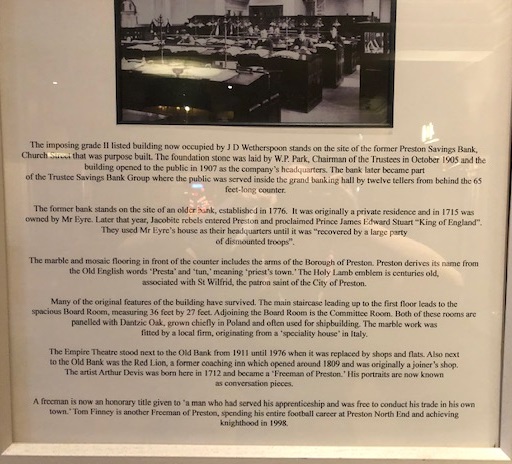
The text reads: This imposing grade II listed building now occupied by J D Wetherspoon stands on the site of the former Preston Savings Bank, Church Street, that was purpose built. The foundation stone was laid by WP Park, chairman of the trustees in October 1905 and the building opened to the public in 1907 as the company’s headquarters. The bank later became part of the Trustee Savings Bank Group where the public was served inside the grand banking hall by twelve tellers from behind the 65-feet long counter.
The former bank stands on the site of an older bank, established in 1776. It was originally a private residence and in 1715 was owed by Mr Eyre. Later that year, Jacobite rebels entered Preston and proclaimed Prince James Edward Stuart King of England. They used Mr Eyre’s house as their headquarters until it was ‘recovered by a large party of dismounted troops’.
The marble and mosaic flooring in front of the counter includes the arms of the Borough of Preston. Preston derives its name from the old English words ‘Presta’ and ‘tun’, meaning ‘priest’s town’. The Holy Lamb emblem is centuries old, associated with St Wilfred, a patron saint of the City of Preston.
Many of the original features of the building have survived. The main staircase leading up to the first floor leads to the spacious board room, measuring 36-feoof by 27-foot. Adjoining the board room is the committee room. Both of these rooms are panelled with oak, grown chiefly in Poland and often used for shipbuilding. The marble work was fitted by a local firm, originating from a speciality house in Italy.
A freeman is now an honorary title given to ‘a man who had served his apprenticeship and was free to conduct his trade in his own town’. Tom Finney is another Freeman of Preston, spending his entire football career at Preston North End and achieving knighthood in 1998.
A poster from 1915 for the Preston Savings Bank.
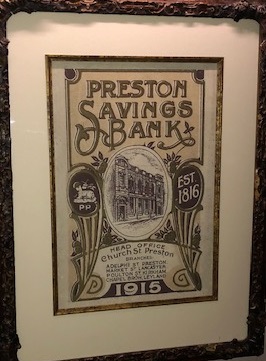
Original petition and pass books.
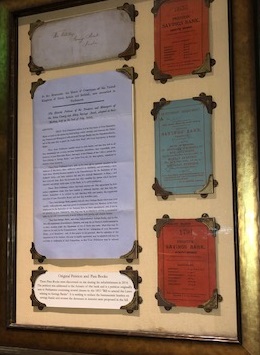
The text reads: These pass books were discovered on site during the refurbishment in 2014. The petition was addressed to the Actuary of the bank and is a petition originally sent to Parliament contesting several clauses in the 1853 ‘Bill to amend the Laws relating to Savings Banks’. It is seeking to reduce the bureaucratic burden on savings banks and reverse the decreases in interest rates proposed in the bill.
A photograph of the boardroom, Preston Savings Banks.
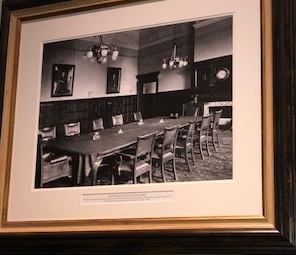
The boardroom stands today very much as it did back in the 1900s.
A photograph of Tom Finney, 1922-2014.
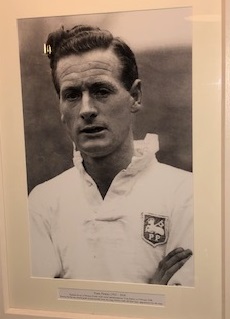
A photograph and text about Tom Finney.
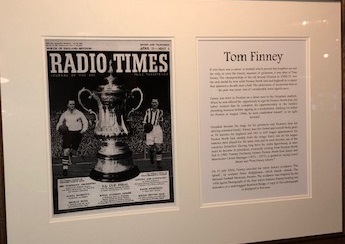
The text reads: If there was a career in football which proved that trophies are not the only, or even the truest, measure of greatness, it was that of Tom Finney. The championship of the old Second Division in 1950-51 was the only medal he won with Preston North End and England in a career that spanned a decade and a half. The admiration of numerous fans in the post-war years was of considerably more significance.
Finney was born in Preston on a street next to the Deepdale stadium. When he was offered the opportunity to sign for Preston North End, his father insisted that he complete his apprenticeship in the family’s plumbing business before signing as a professional. Making his debut for Preston in August 1946, he soon established himself as an agile forward.
Deepdale became the stage for his greatness for Preston’s fans his adorning extended family. Finney was two-footed and scored thirty goals in 76 matches for England and 187 in 433 league appearances for Preston North End, mostly from the wings. Every one of his league matches were played for the same club and he soon became one of the country’s favourites. Having long been the club’s figurehead, in later years he became its president, eventually retiring from Preston North End in 1960. Tommy Docherty, former Preston North End player and Manchester United manager (1972-77), is quoted as saying Lionel Messi was “Tom Finney reborn”.
On 31 July 2004, Finney unveiled the water feature sculpture The Splash, by sculptor Peter Hodgkinson, which stands outside The National Football Museum, Preston.
This pub has retained some of the original features from the savings bank.
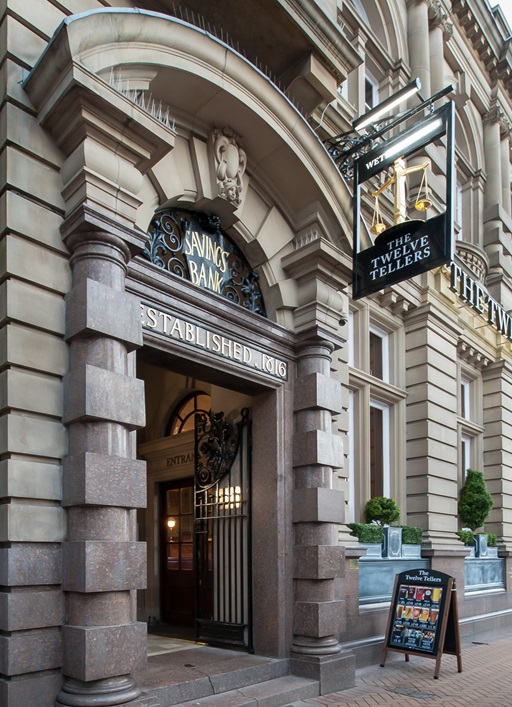
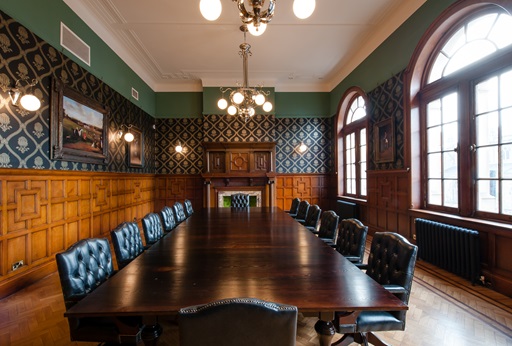
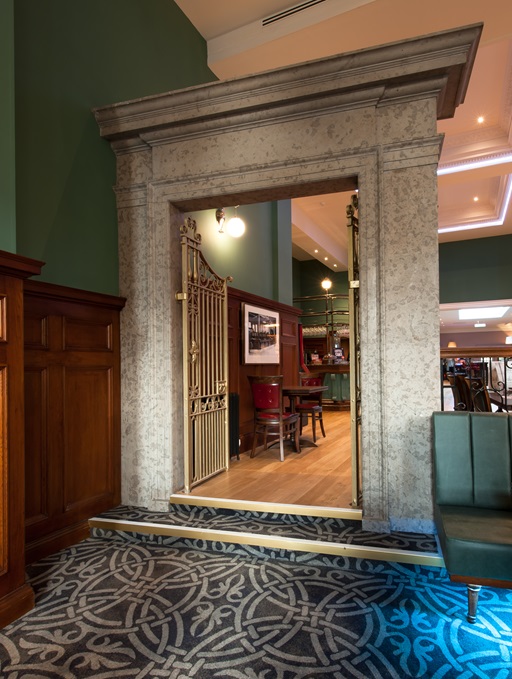
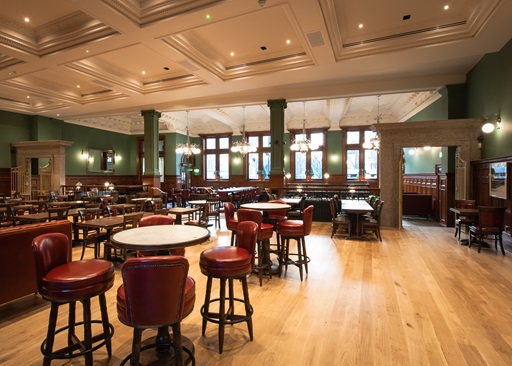
External photograph of the building – main entrance.
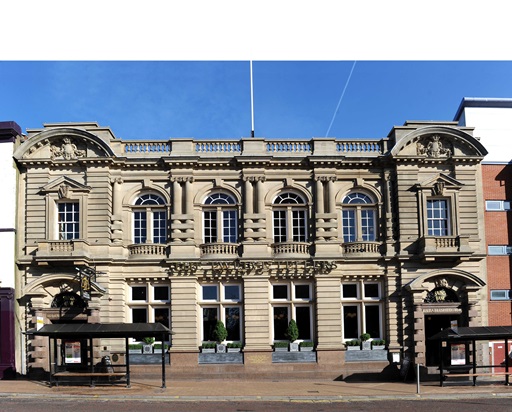
If you have information on the history of this pub, then we’d like you to share it with us. Please e-mail all information to: pubhistories@jdwetherspoon.co.uk